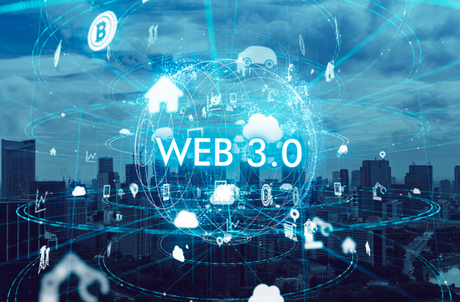Web 3 is a term that has been thrown around a lot lately. It simply refers to the next iteration of the internet that promotes decentralized protocols and aims to reduce dependency on large tech giants. But how did we get there, and why is it on everyone's minds?
So today, we'll look closer at this headline-grabber and explore the main differences between web 2.0 vs web 3.

The advent of Web 3.0 is upon us, but what does that mean? In a nutshell, it's the next iteration of the internet, one that's built on top of blockchain technology . This new web will be more user-friendly, secure, and efficient, thanks to the elimination of third-party intermediaries. Put simply, Web 3.0 is a decentralized internet.
The idea behind it is that the next stage of the internet will be an open platform where users can interact more directly with each other, without the need for central intermediaries. The goal is to create a more democratic and transparent internet where users have greater control over their data and personal information.
To better grasp its advantages, let's have a closer look at its predecessors - Web 1.0 and Web 2.0.
The first iteration of the Internet is closely associated with the era of static websites. Back in the 90s, static websites were designed to display information with little or no interaction capabilities.
It was also used to complement brand awareness and demonstrate the work of writers, authors, and others. The publisher could use the Internet to post information and the user could easily access this information by visiting the publisher's website. During this period, no media sharing was accessible to users.
The main features of the first iteration included.
- Static pages instead of user-generated dynamic content.
- Guestbooks, forums, or chat rooms were used to provide interactivity.
- The use of informers (weather, dollar exchange rates, etc.).
- Pre-set screen resolution instead of adaptable designs.
The second Internet version was born in 2004 when websites became more interoperable. This stage prioritizes social networking and dynamic web content. The Internet we live in aims to make the web more interactive and collaborative, by introducing user-generated content and information sharing.
Therefore, Web 2.0 is often alluded to as a social web where users can create information, instead of consuming it. We can do it through social media platforms, social news sites, wikis, and others.
From a technical standpoint, Web 2.0 relies on the AJAX combination of technologies. It allows users to enjoy an uninterrupted flow of information by updating data asynchronously.
It may seem like Web 2.0 is the climax of everything we can wish for on the Internet. Dynamic content, scalability, and feature-rich user experience are just a sliver of all the advantages. We are now able to use a variety of devices with the same high-quality web content and APIs.
However, the monopoly of A-list companies spawns data privacy issues with our reduced ability to be anonymous. Moreover, users don't own the second iteration of the World Wide Web and can be banned from any Internet destination on demand. This is where Web 3.0 topples Web 2.0.
The third iteration evolved to eliminate the lack of privacy and return the control over the data to users. Web 3.0 does it by relying on decentralized, blockchain technology.
As there's no agreed-upon definition of Web 3.0, it is commonly referred to as the next-generation Internet iteration built around the idea of decentralization. It is assumed that the new online network will allow people to fully own and manage the content they create, anonymize personal data, and become more open and secure.
Although Web 3.0 is still in its early days, its basic concepts have already been manifested. Below are the four most important aspects of the next Internet generation.
Semantic web
The basic idea of the semantic web boils down to making all digital information machine-digestible. To do that, the semantic web connects all the resources of the web not by meaningless links, sending the user from one page to another, but by semantic links.
In this case, users can quickly and accurately find the necessary information, and most importantly, computers would have access to the semantic content of the network.
Blockchain
The notion of blockchain is paramount to Web 3.0 since it is the source of decentralization. The latter is much needed to regain control of user data and make the web more private and user-centered. Blockchain will help achieve decentralized data storage and promote faith in the virtual world.
Intelligent capabilities are another distinctive feature of Web 3.0. Although we have already put artificial intelligence into wide use, it hasn't been employed yet to validate and deliver information to users. Within the third iteration, artificial intelligence will support the semantic web in providing human-like interaction.
Cryptocurrency
It comes as no surprise that cryptocurrency is set to topple fiat in Web 3. The brainchild of blockchain, cryptocurrency will be used to empower all financial transactions between users. Decentralized finance applications will also have cryptocurrency as the main currency.
Personalization
Technological advances and intelligent search will allow Web 3.0 to better understand the user and the intent behind the search query. In this case, users will own Internet sections with curated data in a single place.
Web 3 is yet in its early stages of development. However, tech scions share the optimism that the third Internet iteration will upend the current centralized authority and dominance of huge companies.
Within Web 3, users will get more enablement and control over their data. In 2022, Web 3 is gaining traction, whereas Web 2 is currently the dominating force.

